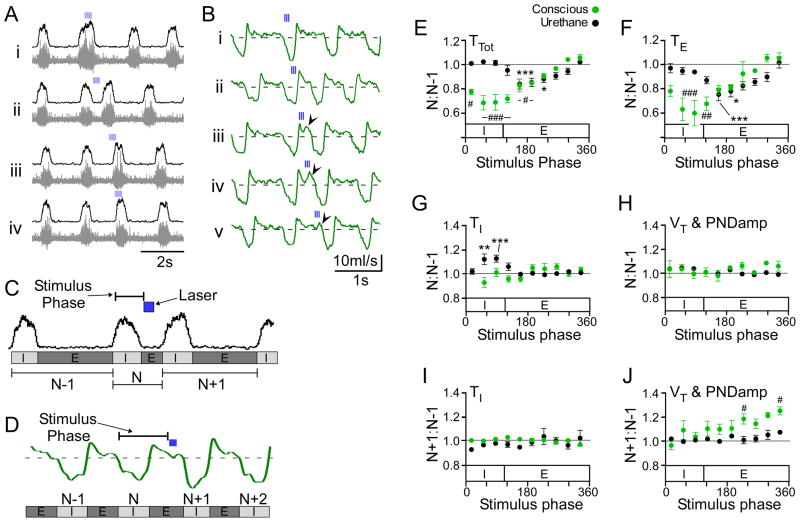Figure 7. Phase-dependent perturbations of respiratory frequency and amplitude in anesthetized and conscious rats.
RTN photostimulation was applied at frequencies less than the resting breathing frequency (<0.2 Hz) so that the stimulus occurred at random within the breathing cycle. A) Original recordings of integrated (upper traces) and raw PND (lower traces) in an anesthetized rat. Train stimulation produced phase specific perturbations in total respiratory cycle (TTot), inspiratory time (TI), expiratory time (TE) and peak PND amplitude (PNDamp). In this example, stimulation during late inspiration (Ai) increased PNDamp and TI. When trains occurred during expiration (Aii–Aiii) there was a decrease in TE with a modest increase in PNDamp, but no change in TI. B) Respiratory flow in a conscious rat. As in A, brief trains (3 pulses at 20 Hz) produced phase specific perturbations in TTot, TI, TE and tidal volume (VT). Stimulation during early inspiration increased VT (Bi). Stimulation during late inspiration reduced the expiratory phase (Bii). Stimulation during early- to mid- expiration decreased TE and produced active expiration (Biii–iv). Stimulation during late expiration (Bv) shortened TE modestly and increased VT of the following inspiration. Data analysis from experiments in anesthetized (C) and conscious (D) rats. See methods for more details. E–J) Group data from anesthetized (N=4) and conscious experiments (N=5). E) Effect of stimulus on respiratory period (TTot). F) Effect of stimulus on expiratory duration (TE). G) Effect of stimulus on inspiratory duration (TI). H) Effect of stimulus on tidal volume and PNDamp. In E–H, values are expressed as ratio between respiratory cycles N and N−1 (see definitions in panels C and D). A value of 1 indicates no change from the N−1 (control) cycle. Note that in both animals, we did not observe significant increases in TE. I–J) Group data from anesthetized (N=4) and conscious experiments (N=5) showing the changes in PNDamp or VT in the N+1 cycle relative to the control cycle N−1. Brief stimulation during late expiration significantly increased VT but not PNDamp of the following inspiratory effort (N+1 cycle) (*** P<0.001, * P<0.05 vs N+1 for E–H and N+2 for I–J in anesthetized rats; ### P<0.001, ## P<0.01, # P<0.05 vs N+1 for E–H and N+2 for I–J in conscious rats).

